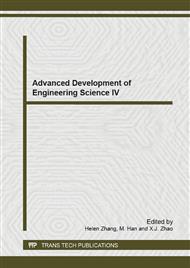[1]
Y. B Rao, A survey of video enhancement techniques, Journal of Information Hiding and Multimedia Signal Processing, vol. 3, no. 1, pp: 71-99,(2012).
Google Scholar
[2]
T. Arici, S. Dikbas, and Y. Altunbasak, A histogram modification framework and its application for image contrast enhancement, IEEE Transactions on Image Processing, vol. 18, no. 9, pp.1921-1935, (2009).
DOI: 10.1109/tip.2009.2021548
Google Scholar
[3]
H.T. Xu, G.T. Zhai, Generalized equalization model for image enhancement, IEEE Trans. Multimedia, vol. 16, no. 1, pp.68-82, (2014).
DOI: 10.1109/tmm.2013.2283453
Google Scholar
[4]
K. He, J. Sun, and X. Tang, Guided image filtering, in Proc. ECCV, (2010).
Google Scholar
[5]
Y.F. Pu, J.L. Zhou, and X. Yuan, Fractional differential mask: A fractional differential-based approach for multiscale texture enhancement, IEEE Trans. Image Process., vol. 19, no. 2, p.491–511, (2010).
DOI: 10.1109/tip.2009.2035980
Google Scholar
[6]
X. Zhu and P. Milanfar, Restoration for weakly blurred and strongly noisy images, in Proc. 2011 IEEE Workshop Applications of Computer Vision (WACV), 2011, p.103–109.
DOI: 10.1109/wacv.2011.5711490
Google Scholar
[7]
R. Raskar, A. Ilie, and J. Yu. Image fusion for context enhancement and video surrealism, In Proceedings of the ACCV, pp.414-419, (2004).
DOI: 10.1145/987657.987671
Google Scholar
[8]
J. Li, S. Z Li, Q. Pan, and T. Yang, Illumination and motion-based video enhancement for night surveillance, In processing of the 2nd Joint IEEE International Workshop on VS-PETS, Beijing, China, pp.169-175, (2005).
DOI: 10.1109/vspets.2005.1570912
Google Scholar
[9]
A. Yamasaki, H. Takauji, and S. C Kaneko, Denighting: enhancement of nighttime images for a surveillance camera, 19th International Conference on Pattern Recognition, ICPR 2008, (2008).
DOI: 10.1109/icpr.2008.4761424
Google Scholar
[10]
Y.B. Rao, W.Y. Lin, L.T. Chen, Image-based fusion for video enhancement of night-time surveillance, Optical Engineering, vol. 49, no. 12, pp.120501-3, (2010).
DOI: 10.1117/1.3520553
Google Scholar
[11]
D.R. Magee, Tracking multiple vehicles using foreground, background and motion models, Image and Vision Computing, vol. 22, pp.143-155, (2004).
DOI: 10.1016/s0262-8856(03)00145-8
Google Scholar
[12]
E. P. Bennett, L. McMillan, Video enhancement using per-pixel virtual exposures, ACM Transactions on Graphics, 2005, 24(3): 845-852.
DOI: 10.1145/1073204.1073272
Google Scholar


